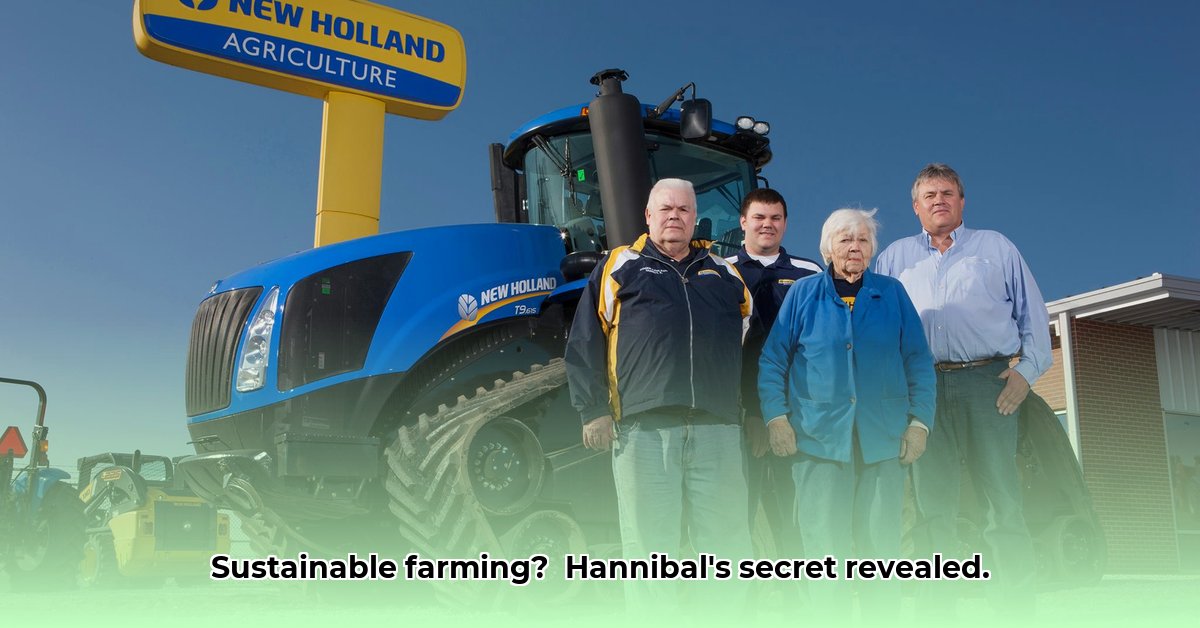
Hannibal Tractor's Role in Northeast Missouri Agriculture
Hannibal Tractor, situated in Hannibal, Missouri, significantly impacts the agricultural landscape of Northeast Missouri. Its extensive network, reaching towns such as Bowling Green, Brookfield, Jerseyville, Quincy, and Havana, provides farmers with essential machinery and services. This accessibility is crucial for maintaining farm operations and ensuring food production. However, a critical evaluation of the company's commitment to sustainable farming practices is warranted. How effectively does Hannibal Tractor integrate sustainability into its operations and equipment offerings? This case study will examine its successes and areas needing improvement.
A Closer Look at Sustainability Initiatives
While Hannibal Tractor facilitates agricultural production, the extent of its dedication to sustainability requires further scrutiny. The company's website currently lacks detailed information on specific environmentally conscious practices. Details regarding carbon footprint reduction, partnerships with environmental organizations, or promotion of fuel-efficient equipment are absent. This lack of transparency hinders a comprehensive assessment of its environmental impact. This opacity raises concerns about the company's overall approach to sustainability. How can farmers reliably assess the environmental credentials of the equipment they purchase from Hannibal Tractor?
Hannibal Tractor's Potential for Positive Change
Hannibal Tractor's substantial reach and established infrastructure create immense potential for positive environmental impact. Its extensive network could serve as a catalyst for wider adoption of sustainable farming techniques. For example, the company could actively promote precision farming technologies, which optimize resource allocation, minimize waste, and boost overall efficiency. Similarly, it could focus on equipment designed for regenerative agricultural practices, which improve soil health and reduce environmental damage. The potential for leadership in this area remains largely untapped.
Recommendations for Improved Sustainability
To enhance its sustainability profile, Hannibal Tractor should prioritize the following:
Enhanced Transparency: Publicly disclose data on equipment sales, categorized by environmental performance metrics (e.g., fuel efficiency). This builds trust and demonstrates commitment.
Sustainability Certifications: Obtaining recognized certifications, such as ISO 14001 (Environmental Management Systems), provides verifiable evidence of commitment to environmental protection.
Collaborative Partnerships: Collaborate with local organizations focused on sustainable agriculture. This strengthens community engagement and amplifies positive impacts.
Shared Responsibility for Sustainable Agriculture
Sustainable agriculture is a collective endeavor. Farmers must actively choose environmentally sound equipment; local governments can offer incentives for eco-friendly practices. Companies like Hannibal Tractor must proactively demonstrate their commitment through transparent actions. This coordinated approach fosters a healthier agricultural ecosystem. The shared pursuit of sustainable practices dictates a cooperative effort, requiring active participation from all stakeholders. What efforts are currently underway to encourage collaboration and knowledge sharing?
Opportunities for Growth and Future Direction
Hannibal Tractor possesses the resources to become a leader in sustainable agriculture. However, realizing this potential demands a proactive commitment, transparent operational practices, and collaborative partnerships. Through these actions, the company can significantly contribute to a thriving and sustainable agricultural community in Missouri. Addressing these challenges will not only benefit the environment but also enhance the company's long-term reputation and marketability to environmentally conscious farmers, representing a significant opportunity for future growth and market leadership.
Further Considerations and Limitations
This case study, based on currently available public information, acknowledges the evolving understanding of sustainable agriculture. Ongoing research may uncover new insights into environmental impacts of farming practices and equipment. The complexities of balancing productivity with environmental protection remain a subject of ongoing academic and practical debate. Therefore, this analysis presents a current snapshot informed by the available data, subject to refinement as new knowledge emerges.
Choosing Sustainable Farming Equipment: A Practical Guide
Key Takeaways:
- Precision farming: GPS-guided tractors and drones optimize resource efficiency.
- Conservation tillage (no-till): Preserves soil and minimizes erosion.
- Efficient irrigation: Drip and sprinkler systems drastically reduce water waste.
- Specialized attachments: Streamline operations, lowering fuel consumption.
- Cost-benefit analysis: Economic factors influence the feasibility of sustainable equipment.
- Training and support: Widespread adoption requires accessible resources.
Hannibal Tractor's role in promoting sustainable farming equipment is crucial. However, a thorough analysis of its approach is essential to understand its contribution.
Hannibal Tractor's Approach: A Critical Assessment
Hannibal Tractor's impact on the agricultural community is undeniable, providing access to critical farming equipment. Yet, a lack of transparency regarding its own sustainability practices limits a full assessment. The absence of publicly available information on vendor selection criteria, end-of-life equipment management, and carbon footprint targets inhibits a thorough evaluation. This lack of transparency undermines the company's ability to demonstrate its commitment to sustainable agriculture. What steps can Hannibal Tractor take to improve its transparency and build a stronger reputation for environmental responsibility?
Evaluating Sustainability: A Framework for Farmers
Choosing sustainable equipment requires a holistic approach:
- Needs assessment: Identify specific farm challenges to guide equipment selection.
- Equipment features: Explore fuel efficiency, precision application technologies, and low-impact attachments.
- Lifecycle costs: Consider fuel, maintenance, repairs, and resale value.
- Manufacturer practices: Research the manufacturer's commitment to sustainability.
- Expert advice: Consult with agricultural experts and experienced farmers.
- Financing options: Explore subsidies, grants, or low-interest loans.
- Performance monitoring: Track equipment performance to optimize efficiency.
Hannibal Tractor's Future: A Call to Action
Hannibal Tractor has the opportunity to become a leader in sustainable agriculture. Increased transparency regarding its sustainability initiatives is paramount. Publicly sharing data on equipment efficiency and environmental impact would significantly enhance credibility. Setting and reporting on specific sustainability goals would further solidify the company's commitment to environmental responsibility. This transformative commitment would not only improve the environmental impact of the company itself but would also significantly enhance its reputation within the sustainable agriculture community. Such a move could dramatically increase consumer confidence and market share.